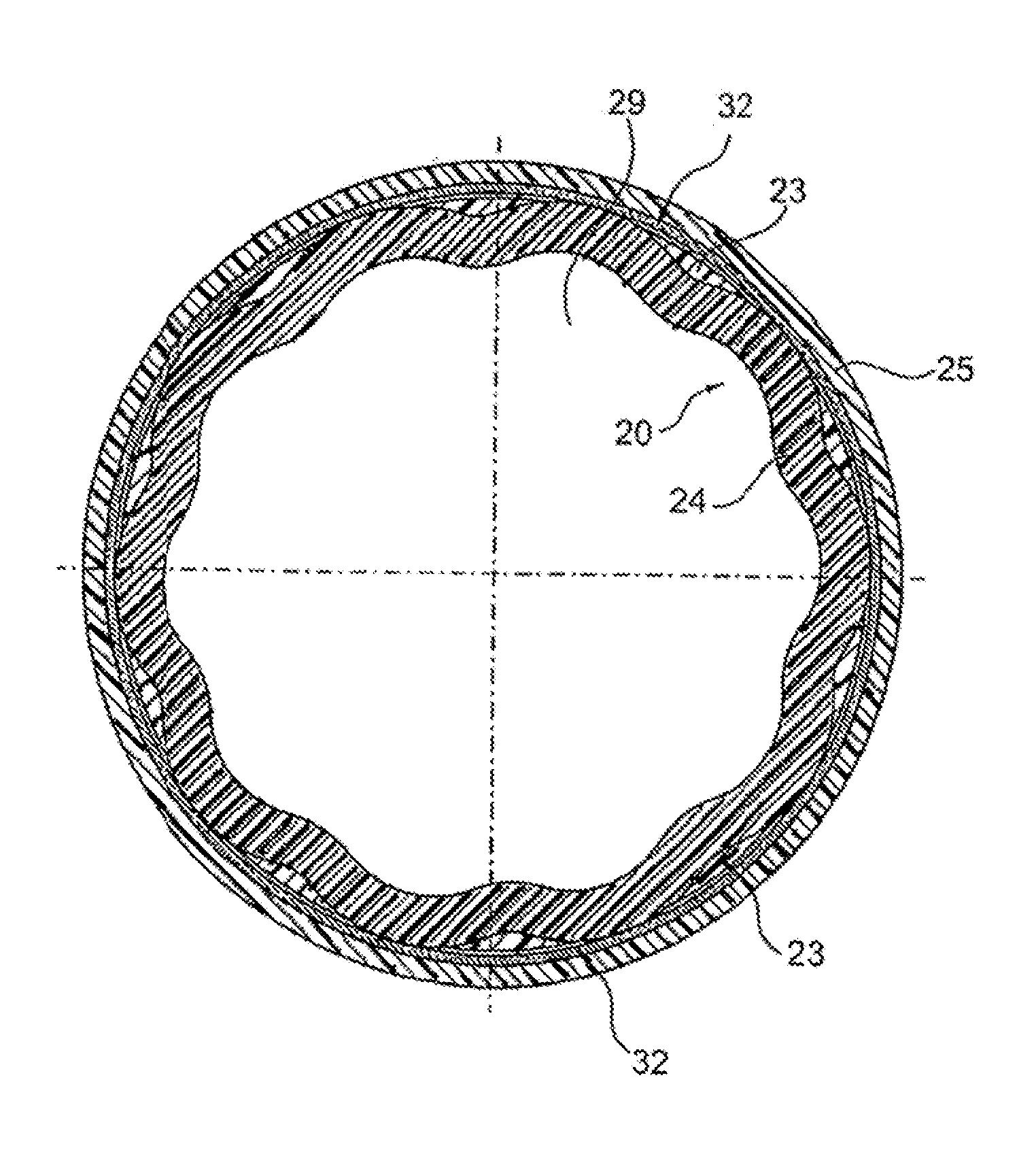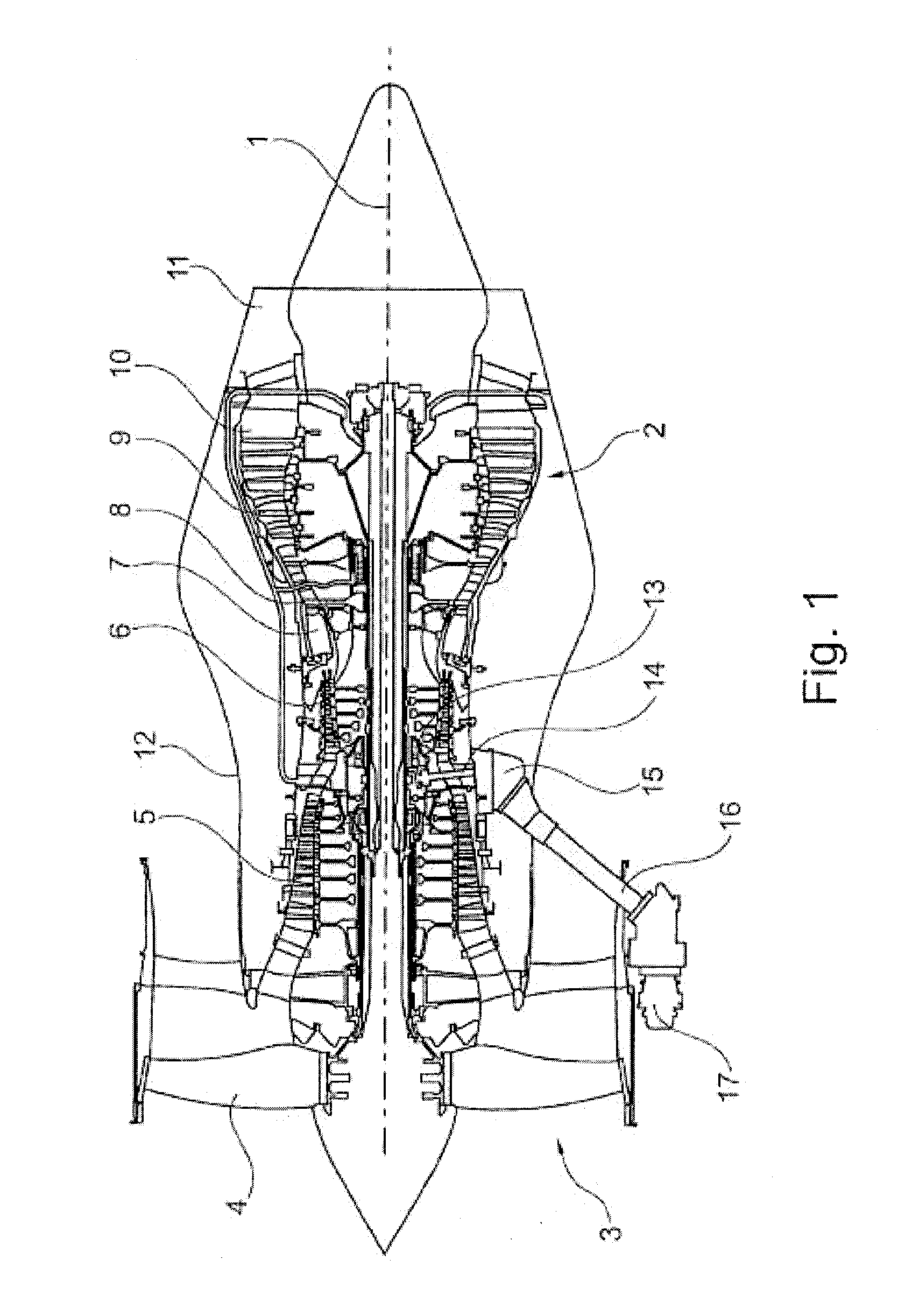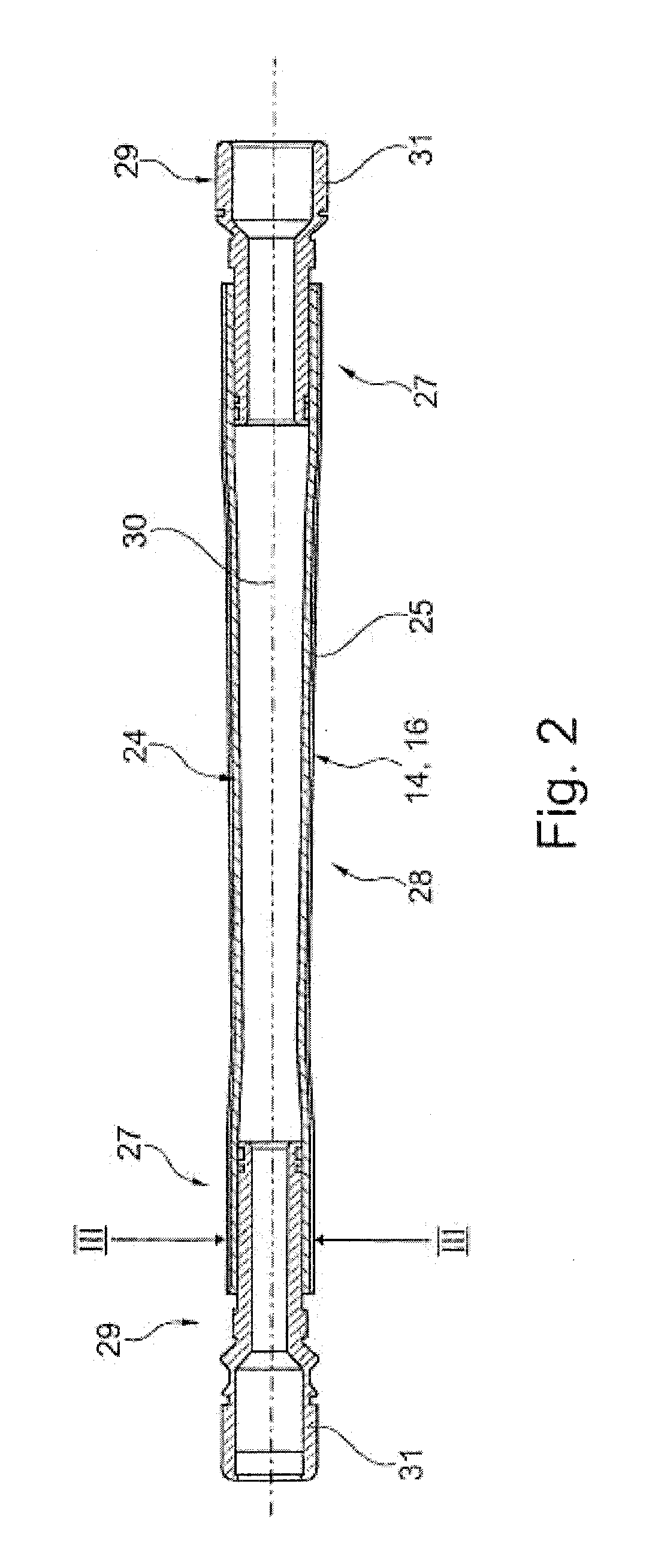Shaft of a gas-turbine engine, in particular a radial shaft or a shaft arranged at an angle to the machine axis
- Summary
- Abstract
- Description
- Claims
- Application Information
AI Technical Summary
Benefits of technology
Problems solved by technology
Method used
Image
Examples
Embodiment Construction
[0056]The gas-turbine engine 2 in accordance with FIG. 1 is a generally represented example where the invention can be used. The engine 2 is of conventional design and includes in the flow direction, one behind the other, an air inlet 3, a fan 4 rotating inside a casing, an intermediate-pressure compressor 5, a high-pressure compressor 6, a combustion chamber 7, a high-pressure turbine 8, an intermediate-pressure turbine 9 and a low-pressure turbine 10 as well as an exhaust nozzle 11, all of which being arranged about a center engine axis.
[0057]FIGS. 2 and 3 show an exemplary embodiment of the radial shaft in accordance with the invention, or of an engine shaft of the inventive type. The shaft is designed either as a radial shaft 14 or as a shaft 16 arranged at an angle and is used to connect a gear unit 13 (see FIG. 1) to a gear unit 15. The gear unit 15 can be operatively connected to auxiliary units. The shaft designed in accordance with the invention can also be designed in the ...
PUM
| Property | Measurement | Unit |
|---|---|---|
| Angle | aaaaa | aaaaa |
| Angle | aaaaa | aaaaa |
| Length | aaaaa | aaaaa |
Abstract
Description
Claims
Application Information
 Login to View More
Login to View More - R&D
- Intellectual Property
- Life Sciences
- Materials
- Tech Scout
- Unparalleled Data Quality
- Higher Quality Content
- 60% Fewer Hallucinations
Browse by: Latest US Patents, China's latest patents, Technical Efficacy Thesaurus, Application Domain, Technology Topic, Popular Technical Reports.
© 2025 PatSnap. All rights reserved.Legal|Privacy policy|Modern Slavery Act Transparency Statement|Sitemap|About US| Contact US: help@patsnap.com



